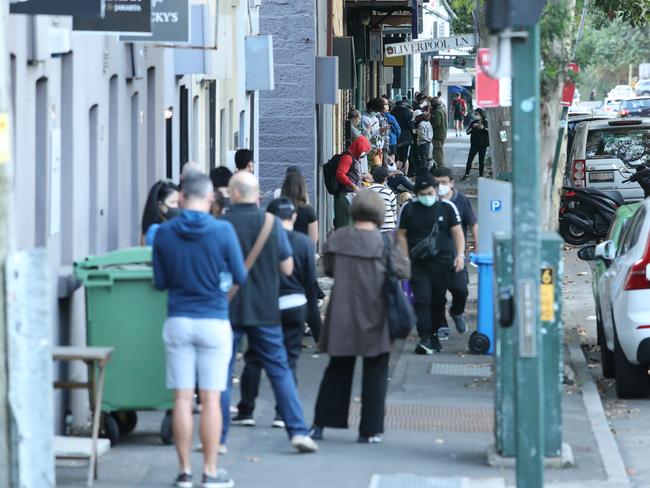Talking Point: Long road to recovery must start now
LISA DENNY: Retraining to help our economy should be put in place without delay

Opinion
Don't miss out on the headlines from Opinion. Followed categories will be added to My News.
LESS than three hours after Premier Peter Gutwein announced the effective closure of Tasmania’s borders in response to the global pandemic crisis from COVID-19, the Australian Bureau of Statistics released its Labour Force data for February.
More Tasmanians were in employment than ever before (258,700). The unemployment rate (5.5 per cent) was the lowest since July 2011, the labour force participation rate (61.7 per cent) was the highest it has been since January 2009, and the number of unemployed was the lowest it had been since October 2011.
The economy was performing strongly and there was a deep sense of confidence and pride in the state.
What will happen to our economy in the wake of this crisis is unknown. What is certain is that the economy has peaked for now. How quickly Tasmania recovers depends on countless variables; many out of our control, some we can influence.
About 12 years ago, the same scenario existed for Tasmania in September 2008, just before the onset of the Global Financial Crisis, except the economy was considerably stronger than it is today and close to full employment. There were more Tasmanians employed than ever (242,100), unemployment was 4.1 per cent and the labour force participation rate was 62.7 per cent, the highest on record.
For the following 12 months the employment market slumped, then continued to oscillate up and down, exposed and reactive to the global economic climate, not returning to the same levels of employment until March 2017, nine years after the onset of the GFC. Since then, employment in Tasmania has continued to grow.
The point is that Tasmania recovered, albeit slowly. There is much to learn from the recovery experience.
While the Tasmanian economy may have recovered, and the number of people employed increased, the unemployment rate and the labour force participation rate still have not reached the same, historically high, levels as in September 2008.
In fact, over the past decade, structural deficiencies in our economy emerged and continued to infiltrate our society, as they do throughout the nation. During our economic recovery, under-employment increased from 5 per cent to 11.2 per cent (doubling from 14,350 people in 2009 to 30,700 in 2020), youth unemployment continued to climb, we saw a shift to part-time employment, an absolute loss in the number of full-time jobs, coupled with the rise of insecure work, the gig economy and the phenomenon of the disappearing working man. Inequality widened, wages were suppressed, yet the cost of living continued to increase.
As the economy recovered post GFC – some sectors faster than others – skill shortages emerged, largely explained by the failure to invest in the education and training of future workforces for when the economy eventually improved. These gaps in skills could be partially solved by attracting people from interstate or overseas while our education and training system caught up and investment in future workforces was reprioritised by industries and the government. Skilled migrants also increased the training capacity of our workforce, enabling more people to get into skilled work faster.
Likening a potential economic recovery from the COVID-19 global pandemic crisis to the GFC recovery is difficult and perhaps not even comparable. The GFC was a financial economic crisis, the pandemic is a health crisis first with widening global economic and social implications on a daily basis.
What is clear is that as the economy recovers and some industry sectors start to grow again, it is unlikely emerging skill shortages will be solved through migration means.
Not only will strong, and necessary, border controls be restrictive for population movements, they will most likely be ongoing until a vaccine can be accessed by the whole population. But perhaps the greatest test, when the time comes, will be whether the desire or confidence to relocate still exists, or whether the security and attachment to place will prevail. This may be an opportunity for Tasmania.
The economy will recover, and it will restructure, as economies do. Some industries will become stronger, earlier, like the health care and social assistance sector which will require many more trained and skilled workers over the years to come, and the agriculture sector as food security remains critically important. Other industries will take far longer to recover, and may not to the same level enjoyed prior to the pandemic crisis. For the tourism sector, a lack of financial means and confidence to travel will likely impact the sector for some time to come.
As such, it is now more important than ever to ensure our education and training systems are invested in and functioning appropriately with multiple purposes. Right now, they need to be reactive in providing reskilling to the huge number of affected workers to assist them transition to other opportunities that exist now and as they emerge, for example, facilitating displaced workers to agricultural jobs impacted by the loss of the seasonal worker program and backpackers using working holiday visas.
The public service and associated services will need to immediately increase its capacity to support many displaced people into other work and training. In fact, many of those displaced workers with customer service, administration and management skills could be quickly retrained to fill these support roles. This should be happening now.
Being proactive is vital; identifying where demand will be; which growing industries and new sectors and what job roles when, based on a restructuring economy. For example, consider fast-tracking courses such as enrolled nursing and other care related training, including working with employing organisations to co-ordinate work placements and supervision, despite the trying times, to ensure the capacity of the workforce is increasing and can meet future demand. Education and training providers need to ensure they have the systems in place to deliver the required skills as they are needed.
Economic recovery, in the form of industry policy, must go hand-in-hand with education and training policy, and it now must look within our island state to find and train our future workforce. By having a proactive, yet wide, lens, the structural deficiencies which occurred alongside the economic recovery post the GFC should also be averted to achieve inclusive growth.
Dr Lisa Denny is a research fellow with the Institute for Social Change at the University of Tasmania.


